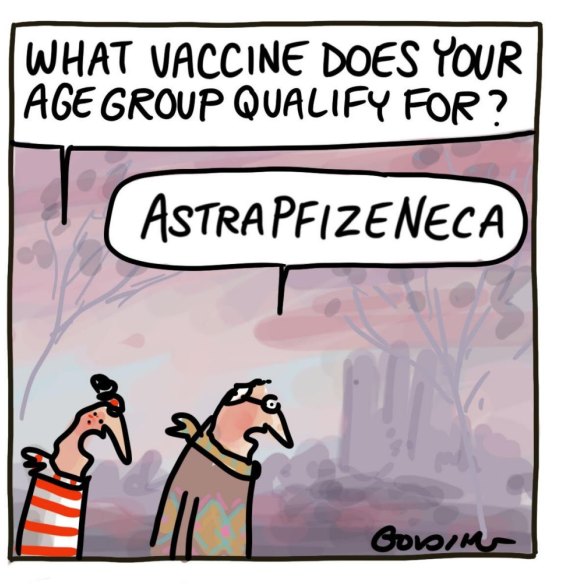Explainer
- Explainer
- Coronavirus pandemic
Six questions about the AstraZeneca vaccine answered
A quick guide to some new federal government advice on vaccinations.
On June 28, Prime Minister Scott Morrison announced that under-40s could now request AstraZeneca from their GP, with the Commonwealth agreeing to indemnify doctors who administer the vaccine.
“If they are willing to go and speak to their doctor and have access to the AstraZeneca vaccine, they can do so,” he said.
One point of confusion was that it was already possible for under 40s, who were eligible, to ask for an AstraZeneca vaccine from their GP – it was never banned, but the indemnity may give doctors more confidence to administer it.
But I thought you shouldn’t have AstraZeneca if you were under 60?
The advice from the independent Australian Technical Advisory Group on Immunisation (ATAGI) – that Pfizer is the preferred vaccine for under-60s due to an increased risk of rare clotting events linked to the AstraZeneca jab – remains unchanged.
Isn’t this confusing?
Yes. The president of the Australian Medical Association, Omar Khorshid, says he was surprised by the announcement and does not endorse people under 40 receiving the AstraZeneca vaccine. Dr Khorshid urged people under 60 to continue to heed the advice of the ATAGI, the nation’s immunisation experts, and wait for the Pfizer vaccine if they could.
What if I am over 60?
The advice has not changed - you can receive the AstraZeneca vaccine.

Credit: Matt Golding
What is the risk of blood clots?
ATAGI’s most recent report estimates the risk of thrombosis with thrombocytopenia syndrome (TTS) for people under 50 when they receive the AstraZeneca vaccine is 3.1 per 100,000. The risk falls to 2.7 per 100,000 for 50-59 year olds, 1.4 for 60-69 year olds, 1.8 for 70-19 year olds and 1.9 for those 80 and older.
It says the risk of blood clots following a second dose of AstraZeneca is much lower than the risk following a first dose.
Can I ‘mix and match’ my vaccines?
The position of Australian health authorities is to stick to one kind of vaccine. From their perspective, the evidence is insufficient to begin rolling out a mix-and-match approach.
There have been some encouraging early results from a British vaccine study that suggests mixing doses of Pfizer and AstraZeneca creates a strong immune response.
A mixed schedule of the Pfizer shot followed by the AstraZeneca vaccine, and vice versa, resulted in high concentrations of antibodies against COVID-19 when given four weeks apart, the Lancet medical journal reported.
The Canadian government allows vaccine mixing.
If I’ve had my first shot, how long should I wait until the second?
The second dose of the Pfizer vaccine is administered at least 21 days after the first.
The Therapeutic Goods Administration’s advice is that AstraZeneca should be administered in two doses between four and 12 weeks apart. The ATAGI has recommended that the interval between first and second doses be 12 weeks.
A study published in the Lancet in February indicated that if the second dose was given less than six weeks after the first, vaccine efficacy at preventing symptomatic infections was 54.9 per cent. If given at least 12 weeks apart, efficacy rose to 82.4 per cent.
Stay across the most crucial developments related to the pandemic with the Coronavirus Update. Sign up for the weekly newsletter.
Let us explain
If you'd like some expert background on an issue or a news event, drop us a line at explainers@smh.com.au or explainers@theage.com.au. Read more explainers here.